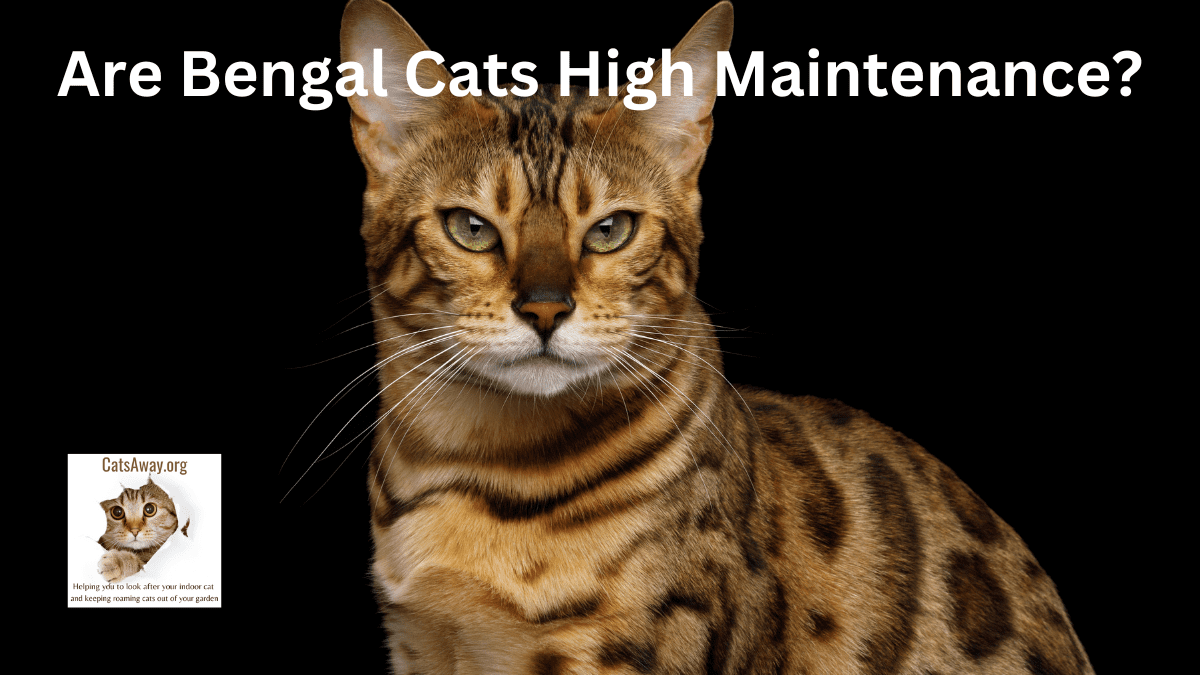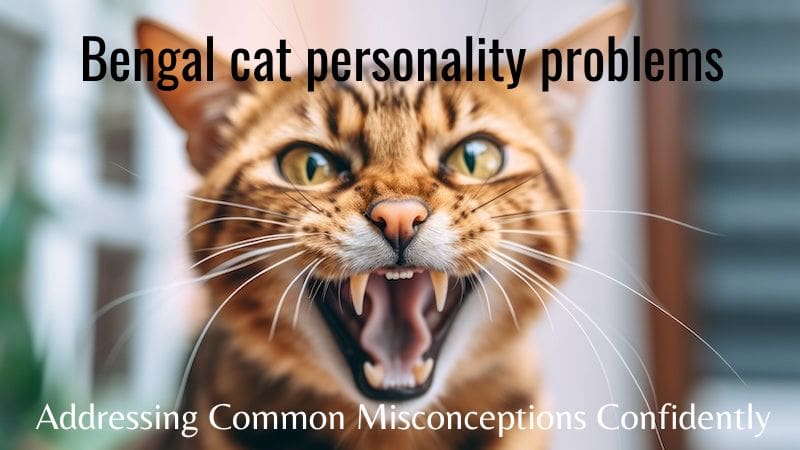Bengal cats are an increasingly popular choice for pet enthusiasts, due to their wild appearance and striking patterns. As with any rare breed, cost can be a significant factor when considering adding a Bengal cat to your family.
How much are Bengal cats? The price of a Bengal cat can vary depending on factors such as the breeder’s reputation and the cat’s specific coat color and pattern. Generally, a purebred Bengal kitten from a reputable breeder will cost you between $1,500 and $3,000. Show-quality Bengals will be priced higher, sometimes reaching as much as $4,800.
In addition to the initial purchase of your Bengal cat, you should also consider all the additional expenses such as food, treats, toys and routine medical care, which play a crucial role in maintaining the health and well-being of these beautiful felines.
Bengal Cat Basics
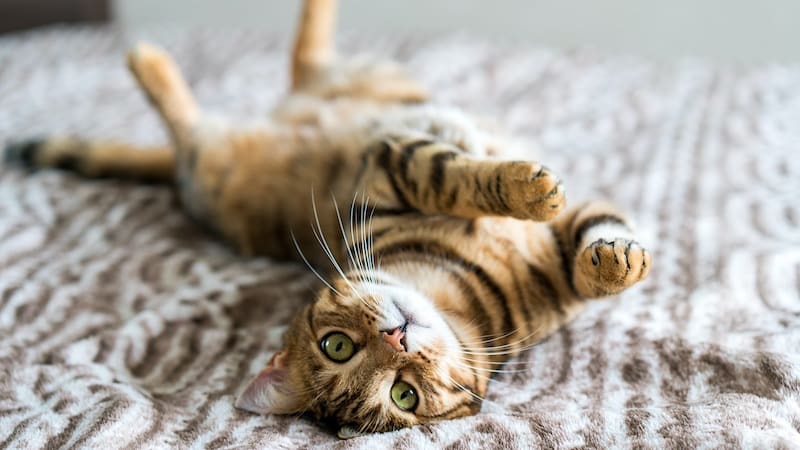
Origin and Ancestors
Bengal cats are a breed created by crossing domestic cats with the wild Asian leopard cat. They were first bred in the 1960s to combine the exotic look of wild cats with the temperament of domestic felines. Their name comes from the Latin name for the Asian leopard, Prionailurus bengalensis.
Appearance
Bengal cats come in various coat colors, including brown, snow, silver, and more. Their coat pattern can be either marbled or spotted, which contributes to their wild cat-like appearance.
Temperament and Activity Level
Bengal cats are known for their active and energetic nature. They thrive on exercise and playtime, making them an excellent fit for families with an active lifestyle. Keep in mind that they do require a great deal of attention and mental stimulation to stay happy and healthy.
As for their temperament, Bengal cats are generally friendly, sociable, and affectionate creatures, but they can also be independent and assertive at times.
Intelligence and Affection Level
One of the most notable traits of Bengal cats is their high level of intelligence. They are quick learners and can be trained to do various tasks like fetch, follow commands, and take to cat harness training like a duck to water.
In terms of affection, Bengals tend to form strong bonds with their owners and enjoy receiving attention when they are not busy exploring or playing. However, their affection level may vary, with some Bengals being more independent than others.
Bengal Cat Prices

Price Factors
Bengals are rarer than most domesticated cats which means owning a Bengal cat invariably will cost more than most domesticated cat breeds, they’re probably on a par with the Persian cat price.
A Bengal cat price can vary widely, with Bengal kittens costing around $1,500 and up to $3,000 for exceptional kittens and adult Bengal cats falling in the range of $500 – $1,500. Factors that influence the cost include the breeder’s reputation, the cat’s coat color and pattern, and whether the Bengal is a purebred or a mix.
Show-quality Bengals are priced higher, typically from $2,800 to $4,800, while pet-quality Bengal kittens are more affordable.
Here are some common price ranges you will find for Bengal kittens based on the breeder:
$200 to $500: A scammer, usually listed for sale as a half-Bengal
$500-$1,000: Be cautious, as these are likely via a backyard unethical breeder.
$1,000-$1,500: On the lower end for a purebred pet Bengal kitten
$1,500-$2,000: A good average price from a reputable breeder
$2,000-$2,500: On the higher side, but still fair. Breeder will most likely have a very good reputation
Adopting a Bengal cat from a rescue or shelter will cost a lot less than purchasing from a breeder
Additional Expenses
In addition to the initial cost of owning a Bengal cat, there are some additional essential expenses to consider:
Medical expenses: Bengal cats require vaccinations, routine vet visits, deworming and flea treatment as well as potential treatments for any health issues
Registration: Registering your Bengal with an organization like TICA may have a fee
Collar, ID tag, and accessories: As a responsible pet owner will want to purchase items such as a cat collar, an ID tag and have your cat chipped for identification and safety purposes
Cat toys: Scratching posts, cat trees and a cat wheel will keep your Bengal cat healthy and entertained
Cat bed: You’ll need a cat bed ready for your new pets arrival.
Food and water bowls: You’ll also need bowls for your Bengal’s meals and hydration
Litter box and litter: You’ll need to purchase a litter box and then there will be the ongoing cost of litter to consider
Food expenses: Feeding your Bengal a protein-rich diet is essential for its health; this cat food can cost between $10 and $40 per month, depending on preferences and quality
Treats: Treat expenses can range from $10 to $50 per month, depending on how frequently you spoil your furry friend
Pet insurance: Vet bills can soon run into the thousands so many owners of rare cats choose to purchase pet insurance to offset unexpected medical costs
Remember to keep your Bengal cat’s health and safety in mind, ensuring they receive adequate care and attention throughout their life
Understanding Generations and Quality
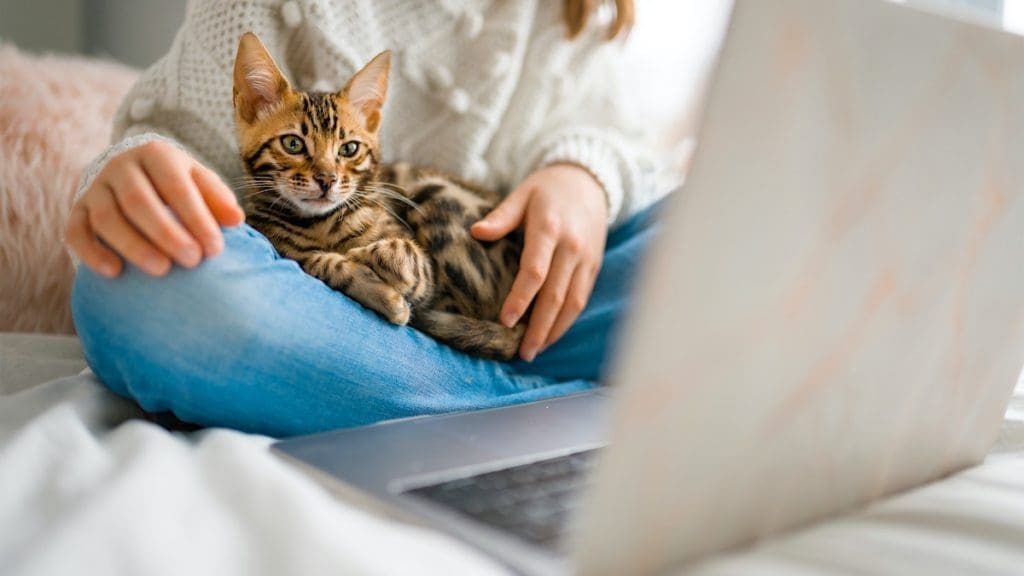
F1 to F3 Generations
In the world of Bengal cats, generations are determined by how far removed the cat is from their wild ancestor, the Asian Leopard Cat.
The first generation, or F1, is a Bengal cat with one parent being an Asian Leopard Cat and the other being a domestic cat.
The F2 generation results from breeding an F1 Bengal with another domestic cat.
F3 generation comes from breeding an F2 Bengal with another domestic cat.
Each generation removed from the Asian Leopard Cat tends to be more domesticated. However, it’s essential to remember that these earlier generations (F1, F2, and F3) can have more wild tendencies and are less likely to be suitable pets for inexperienced cat owners.
Breeder Quality vs Pet Quality
When discussing Bengal cat quality, it’s crucial to distinguish between breeder quality and pet quality.
Breeder quality Bengals possess traits that are highly desired in the breed, such as the marbled or spotted coat patterns. These cats are often more expensive and used for showing or for breeding to continue improving the breed.
On the other hand, pet quality Bengals may have less desired features that don’t meet the specific breed standards for showing or breeding. However, they still make wonderful companions for families and cat enthusiasts. These cats are generally more affordable and more suitable for the majority of pet owners.
In summary, understanding the generations and quality of Bengal cats helps potential buyers identify the cat that suits their needs best. It’s essential to consider elements like the generation, coat pattern, and whether a cat is breeder or pet quality when making your decision.
The Bengal Cat Breeding Scene
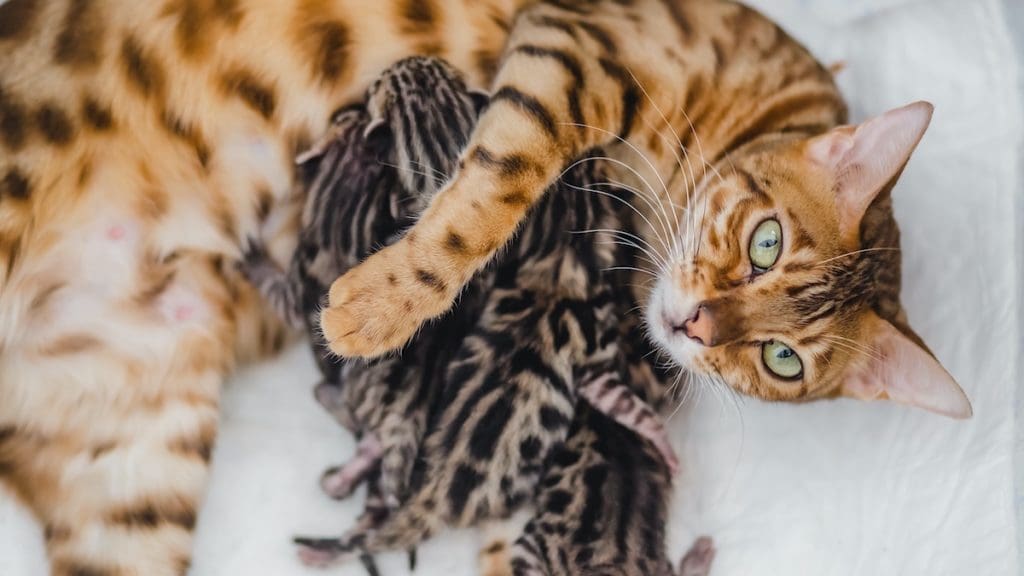
Reputable Breeders
When looking for a Bengal kitten, it is essential to find a responsible breeder with a good reputation. Reputable breeders focus on Bengal cats’ health, temperament, and lineage to ensure they are breeding high-quality kittens. They also perform genetic testing to identify and eliminate potential health issues from the breeding pool.
The TICA Standards
The International Cat Association (TICA) sets guidelines and standards for Bengal cat breeders. TICA breeders abide by a code of ethics and follow strict breeding practices to maintain the breed’s integrity.
TICA registered Bengal cats are purebred, meaning they have been selectively bred to exhibit specific desired traits and characteristics related to their wild ancestry.
Breeding Rights
Breeding rights refer to the permission granted by a breeder or a cat registry – such as TICA – to breed a particular Bengal cat. These rights help ensure that only qualified and responsible breeders are allowed to breed Bengals, preserving the breed’s health and quality.
In general, an ethical breeder will:
Only breed from healthy, well-tempered cats
Avoid inbreeding to reduce the risk of genetic disorders
Follow TICA guidelines for breeding standards
Provide proper care and socialization for kittens
Price their kittens fairly, within the range of $1,500 to $3,000 for a Bengal kitten and around $500 to $1,500 for adult Bengal cats.
By adhering to these standards, reputable Bengal breeders contribute to the breed’s overall health and welfare, ensuring that each new generation of Bengals inherits the best traits from their wild and domesticated ancestors.
Health and Nutrition
Common Health Issues
Bengal cats have a life expectancy of 12-16 years when kept as an indoor cat. Like other pure cat breeds though, they may face certain health issues. Some common health problems include patellar luxation, hypertrophic cardiomyopathy, and progressive retinal atrophy. Keep in mind that regular visits to the vet can help prevent or manage these issues.
Grooming
Although Bengal cats have short fur, they still need regular grooming, such as brushing. Doing so removes loose hair and helps to distribute natural oils. Regular grooming keeps their coat healthy and reduces shedding.
Regular grooming can also keep dander to a minimum. While Bengal cats aren’t considered hypoallergenic, mild allergy sufferers often find Bengal cats tolerable due to their short coat.
Nutrition
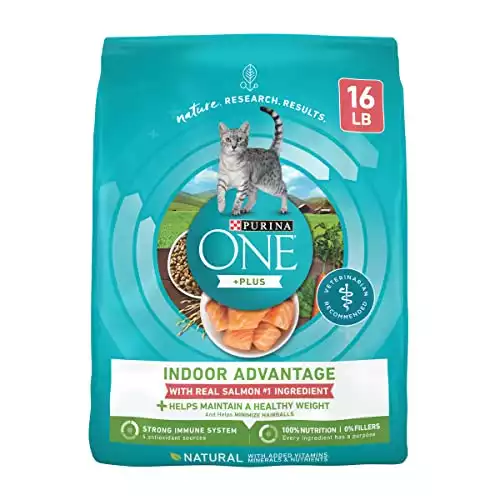 Purina ONE Natural Low Fat High Protein Cat Food Plus Indoor Advantage with Real Salmon
Purina ONE Natural Low Fat High Protein Cat Food Plus Indoor Advantage with Real Salmon
16lb bag
This high-protein nutritional weight control indoor cat food has 10 percent less fat than Purina ONE tender selects blend. Made with Salmon it helps your indoor cat maintain a healthy weight
A nutritious diet is essential for the overall health of Bengal cats. Their diet should mainly consist of protein-rich foods, such as salmon, turkey, chicken, and minimal carbohydrates. Ensure that they have a balanced diet by including omega-3 fats, which can be found in high-quality cat foods specifically those made for indoor cats.
Protein sources: Fresh turkey, chicken or fish.
Omega-3 fats: Found in high-quality salmon based cat foods or supplements.
Carbohydrates: Keep carbohydrate content low, as cats have no dietary need for them.
Remember to monitor your Bengal cat’s weight and provide fresh water at all times. Occasional treats can be offered, but moderation is key, and treats shouldn’t make up a significant portion of their diet. With proper care and nutrition, your Bengal cat can lead a long, healthy life.
Exercise
Bengal cats are an active and energetic breed. They require plenty of physical and mental stimulation to prevent boredom and destructive behavior so you need to be able to provide time to play with your cat.
It is recommended that Bengal cats get at least 30 minutes of exercise each day, which can include playtime on a cat exercise wheel such as the one shown below, climbing on cat trees, and chasing laser pointers or other toys.
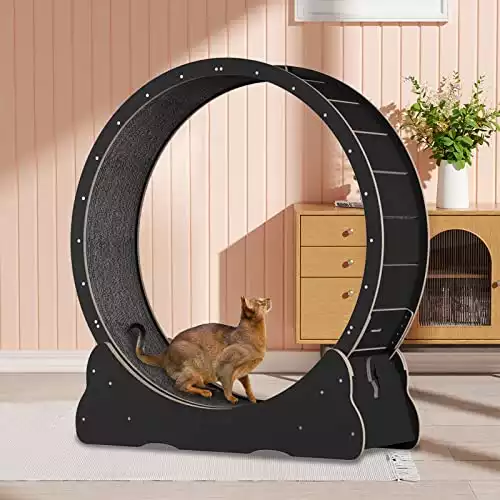

With its sturdy base this makes an ideal fast cat exercise wheel. If you have high energy cats this could well be the ideal cat wheel for your pets.
- The Cat Exercise Wheel is made of durable wood and has a solid, sturdy design that can withstand even the most active cats
- The Cat Exercise Wheel also doubles as a scratching board, with sisal rugs lining the inside and outside of the wheel for added grip and scratching
- While the Cat Exercise Wheel is relatively quiet, it's not completely silent and may make some noise when in use
It’s also important to provide a safe and stimulating environment for Bengal cats, with plenty of hiding spots, perches, and scratching surfaces. A bored or unhappy Bengal cat can lead to scratching behavior and develop inappropriate urination issues, so it’s important to provide them with plenty of outlets for their energy and curiosity.
Other Important Considerations
Scams and Warning Signs
When looking to purchase a Bengal cat, be cautious of scams and backyard breeders. A good average price for a Bengal kitten is between $1,500 and $2,000. If the price is significantly lower, such as $500-$1,000, there’s a high chance it might be a scam or a backyard breeder. Be mindful of breeders with poor quality or excessive pricing.
Warning signs:
Unrealistic prices
Poor communication with the breeder
Lack of proper documentation or records of vaccinations and medications
Leash Training Techniques
Bengal cats are agile and active; if you don’t have any garden space for an outdoor cat enclosure then many Bengal cat owners have found leash training can provide them with an alternative method of safe outdoor exposure. Here are some tips for leash training:
Choose the right leash and harness: Make sure the leash is lightweight, and the harness is reflective for nighttime safety.
Introduce the harness indoors: Have your cat wear the harness inside the house, so they get used to it before going outside.
Start with short leash sessions: Begin by walking your Bengal cat on the leash inside your home to familiarize them with the feeling of being on a leash.
Gradually increase outdoor time: Slowly extend the duration of your outdoor walks while keeping your Bengal cat on a leash.
Remember, age is a factor in training; older cats might require more patience and time to adapt. Cat insurance is also an essential consideration, responsible for covering medical expenses and medications for your furry friend. Always check insurance policies thoroughly to make sure they suit your Bengal cat’s unique needs.
Bengal cat ownership can be very rewarding as they tend to be loyal and devoted to all members of the home including children and dogs.
FAQ
Do Bengals make good indoor cats?
Yes, Bengal cats can make good indoor cats as they are active, playful, and very intelligent. However, they do require plenty of mental and physical stimulation to prevent boredom and destructive behavior.
Providing them with toys, scratching posts, cat trees and an exercise wheel can help keep them happy and healthy indoors. It’s also important to provide them with a comfortable and safe living environment with plenty of hiding spots and perches to climb on.
Are Bengal cats hypoallergenic?
Bengal cats are not considered hypoallergenic, but they may produce fewer allergens compared to other cat breeds. While no cat breed is completely hypoallergenic, some people with cat allergies may find that they have fewer allergy symptoms around Bengal cats.
This is because Bengal cats have a short, fine coat that sheds less and produces less dander compared to other cats. However, it’s important to note that individual sensitivity to cat allergens can vary, and some people with cat allergies may still experience symptoms around Bengal cats.




